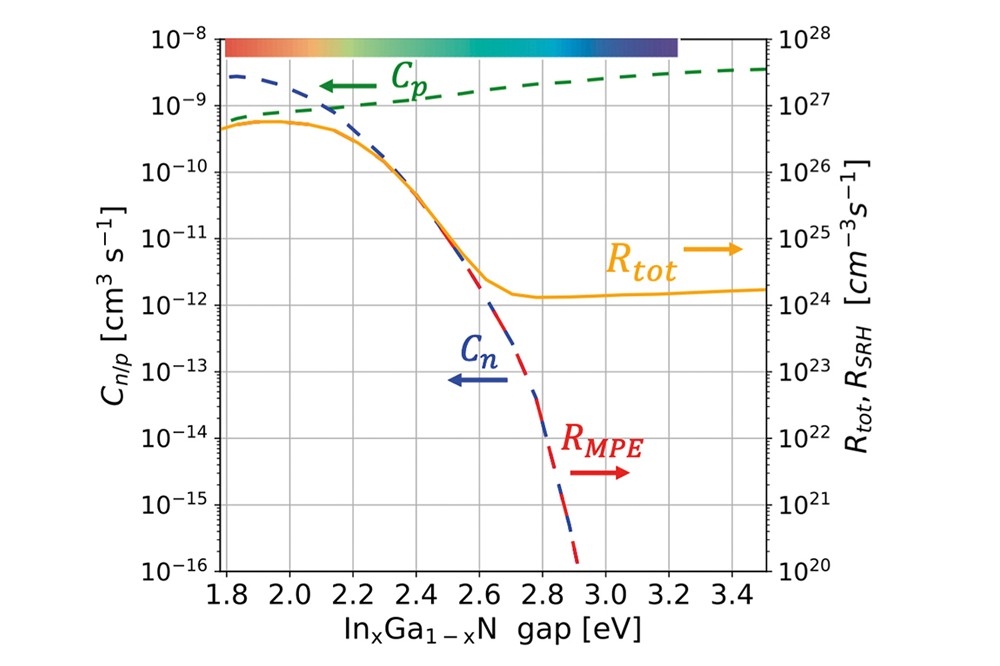The impact of defects on the efficiency of LEDs at shorter wavelengths has been a longstanding mystery. While it has been established that red and green-emitting LEDs are affected by non-radiative recombination process involving defects and multi-phonon emission, the question remains as to how defects influence the efficiency of blue and UV emitters.

A team of computational scientists at the University of California, Santa Barbara, led by Chris Van de Walle, have provided an answer to this intriguing question. Their newly developed methodology reveals that the trap-assisted Auger-Meitner effect can lead to loss rates that are significantly higher than those caused by multi-phonon emission alone. This discovery helps resolve the puzzle of how defects can cause loss in materials with wider bandgaps.
The trap-assisted Auger-Meitner process is related to the Auger process, which was first reported by Pierre Auger in 1923 and also described by Lise Meitner in 1922. While the Auger process involves an electron combining with a hole to promote another electron or hole to a higher energy state, the trap-assisted Auger-Meitner process identified by the UCSB team involves the localization of an electron or hole at a defect or impurity.
Although extended defects like threading dislocations have little direct impact on the internal quantum efficiency of GaN-based LEDs, the team's research highlights the importance of focusing on point defects such as native defects or impurities to improve device efficiency.
Calcium impurities were considered in the team's calculations. It has been observed that calcium can be an impurity in GaN LEDs grown by MBE, introduced during wafer polishing. In the case of InGaN layer deposition during growth by MBE, calcium seems to be either prevented from riding the surface or trapped in the InGaN layer beneath the active region. According to the calculations, defect-assisted recombination with the trap-assisted Auger-Meitner process for a calcium impurity in GaN is significantly faster, by eleven orders of magnitude, compared to recombination based on multi-phonon emission alone.
While the bulk Auger-Meitner process dominates at high current densities, the trap-assisted recombination is the most significant loss mechanism at more modest carrier densities. It is important to note that non-radiative recombination at a trap cannot be fully described by adding a non-radiative "B" term to the ABC model that describes LED behavior. To fully understand non-radiative recombination, both electron capture and hole capture processes need to be taken into account. The most common scenario involves trap-assisted Auger-Meitner for one capture process and multi-phonon emission for the other, resulting in both linear and quadratic contributions.
Van de Walle and his team are further exploring this research by re-examining potential defects and impurities responsible for efficiency loss in wider-bandgap materials, which were previously overlooked due to low rates based on multi-phonon emission alone. Additionally, they are investigating trap-assisted Auger-Meitner processes where the trap has multiple bound states to determine if including them alters the non-radiative recombination rates.
The newly discovered trap-assisted Auger-Meitner effect sheds light on the role of defects in short-wavelength LEDs, offering valuable insights into improving device efficiency and understanding non-radiative recombination processes.







